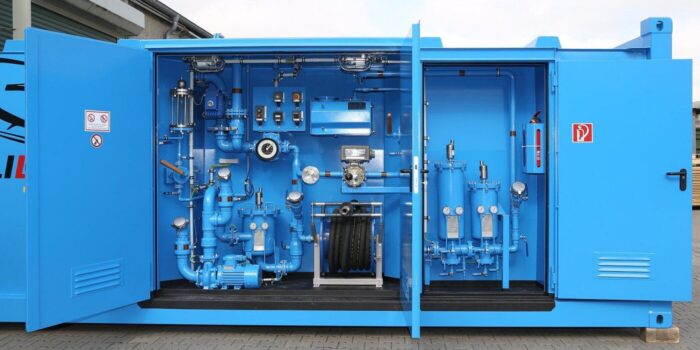A large proportion of industrial gases are sold in high-pressure cylinders of various capacities and sizes, as they are used in many different ways in almost every industry. They usually contain gas in a compressed, liquid or dissolved state. European law regulates the use of pressure vessels through periodic inspections and transport in accordance with the ADR transport guidelines.
Types and application of portable tanks

One of the features that distinguishes pressure vessels is their huge variety. These devices have other capacities, up to several thousand liters, and additionally they can be horizontal or vertical. The construction and capacity of pressurized cylinders determine how we will use them. For example, small-area tanks with a capacity of several liters are used in passenger cars, agricultural and even industrial vehicles. These tanks are usually made of stainless steel, because this material is extremely durable. This has a huge impact on their work, as they are often used in harsh conditions. They must be resistant to moisture, high temperatures and other weather conditions. If the cylinder is properly manufactured, it is made of resistant and thick steel. We are sure that no mechanical damage will occur.
Markings and colors of pressure cylinders
All information on the gas content is given on the cylinder label. The color of its upper part indicates the hazardous properties of the substance it contains. These are the guidelines of the European standards EN-1089-2 ensuring the same safety standards in the gas industry. Each package has a barcode for identifying the tanks. During warehouse work, the codes on the cylinders are scanned. All information is recorded in the documents, including the number of returned and issued cylinders. In addition, all cylinders have their own stamped registration number consisting of a series of numbers preceding the letter L. This applies to identifying the tank in case of a damaged sticker. In order to easily distinguish which cylinder has been used and which is empty, all tank valves are covered with heat-shrinkable foil having an individual serial number after filling.
All exemplary cylinder colors are valid from top to bottom, e.g. in the case of food grade carbon dioxide (top gray, bottom light green).
Examples of gas mixtures and gases for food use:
- food carbon dioxide has a gray light green marking,
- a mixture of inert gases and oxygen has a light blue light green sticker.
Gas mixtures and gases for medical use and breathing:
- synthetic, medical air is covered with a white, black and white sticker
- medical carbon dioxide has a gray and white marking,
- medical nitrous oxide is marked blue and white,
- medical oxygen has white markings,
Gas mixtures single-component gases for technical use:
- hydrogen chloride, chlorine and ammonia have a yellow-gray sticker,
- mixture of inert gas and oxygen blue-gray,
- inert gas mixture air light green gray,
- hydrogen, mixtures with hydrogen and red-gray methane,
- helium has a brown-gray marking,
- nitrogen black and gray,
- carbon dioxide gray,
- argon dark green-gray,
- chestnut acetylene,
- and technical oxygen is white and blue.


